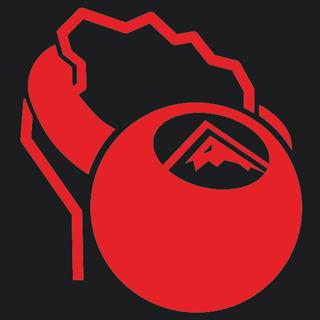
Is It "Safe" to Lift Heavy?
Are you too old to lift heavy and train plyometrics? Hell no. #100YearAthletes who want to ski, board, bike, climb, and hike into their golden years need both. Check out our latest podcast episode for more on how to lift heavy and train plyometrics – safely – and why you don't need Olympic lifts and high-volume gym work.
30 Nov 20239min

HIIT That – Just Not Too Often
You probably HIIT it too hard and too often. Yep, you can overdue high intensity interval training, especially if you're a mountain athlete who gets it in just by doing your sport. It feels good to sweat truckloads and/or feel like you got hit by a truck after your workout. But HIIT does not cover all the pillars of fitness you need to ski, bike, climb, and run into your golden years. HIIT up the 100 Year Athlete podcast and blog for more on how HIIT fits in the longevity puzzle. #100YearAthlete #Longevity #HIIT #LacticAcid #AllOut #Mobility #Strength #Speed #Power
10 Nov 20237min

If You Only Have 10 Minutes to Train Mobility, What Should You Do?
VIDEO A lot of mountain athletes join Off The Mountain because they're experiencing joint pain while doing the sports they love. Often, they chalk it up to "old age." In reality, most of them have been neglecting mobility – which is about actively moving your joints through their full range of motion. It's not flexibility, the ability to passively lengthen soft tissues. The big payoff of mobility is that it improves two-way communication between your nervous system and your tissue. When communication is poor, your joints don't move the way they need to move, and you're more likely to experience pain and injuries. When communication is strong, you can move your joints with precision and avoid being stuck in positions that increase pain and limit your performance. It doesn't matter whether you're super mobile or super tight – to maintain healthy communication, you must regularly move your joints the way they like to be moved. And no, mountain sports don't move your joints through their full ranges of motion. I know everyone is busy. So, if you can only spend 5-10 minutes on mobility 3-4 times a week, what should you do? I'll walk you through three drills that offer the most bang for your buck. To learn these well, first watch the video, Then do the motions with the video playing so you can hear my cues. We'll cover three sets of exercises covering the three most important joints: Spine: Segmented Cat Cow Shoulders: Dumbbell Internal Rotation and External Rotation Hips: Banded Hip Axial Rotation, Internal and External VIDEO Questions? Want more personalized mobility drills? Hit us up.
1 Nov 202310min

DIY Programming: How to Create Workouts for Mountain Sports
Creating your own workout programs can be intimidating, especially if your purpose for training is to keep doing mountain sports like skiing, biking, running, and climbing. How do you know which exercises to include? What rep and set counts make sense? How do you avoid causing imbalances or missing important muscle groups? Behold: this graphic has some answers. Listen to "DIY Programming" on 100 Year Athlete Podcast and check out the Off The Mountain blog for more details about our DIY programming template. Check out our Instagram page to get the graphic.
20 Okt 20236min

Want to Ski at Age 90? Eat Enough Protein
Want to ski, bike, and hike (or play pickleball) into your 90s? Start eating your body weight in grams of protein. Check out the latest episode from the 100 Year Athlete Podcast with Ben Van Treese to learn why protein matters, the difference between animal and plant sources, and how to eyeball your daily protein intake. #100yearathlete #Longevity #Protein #Nutrition #Aging
19 Okt 20238min

Stop doing whatever hurts—but keep playing
"Every time I ski, my knee hurts. What should I do?" I get that question all winter long. If you are playing and training through joint pain, you are making that pain worse and ensuring it'll stick around. Stop doing whatever hurts—but keep playing. How? That is the subject of today's podcast and blog post. #100YearAthlete #JointPain #Skiing #KneePain #GetOffTheCouch
4 Okt 202310min

The Pregnancy Class Technique That Eliminates Sciatic Pain on a Bike
Learn the pre-ride routine that my personal training client Mark uses before every ride. Mark has been working with me to overcome sciatic issues when hitting race pace, especially on his mountain bike. Together we have dialed in a pre-ride routine that has him feeling great and racing like he was before his injury. Mark is a 40 year cyclist with a full time career that gets in the way of his riding. The Routine (YouTube Playlist) Butterfly PAILs 30s Stretch 30s PAILs x3 Rounds Box Stretch 30s Stretch 30s PAILs x3 Rounds Reactive Hamstring Kicks 8s max effort kicks 22s rest (total round is 30s) x 6 rounds
3 Okt 20238min

Just Continue: How 72-Year-Old Mountain Biker and Skier Sherry Walsh Keeps Going
"I can be at home and hurt and be weak, or I can be at the gym and hurt and be strong." -Sherry Walsh, 72 years old Sherry Walsh is not your average 70-something. While most people her age worry about falling and breaking a hip, Sherry is out on her mountain bike 5-7 days a week. She enjoys climbing 2,600+ feet up to Shadow Lake here in Park City, Utah. Her mental game is next level, and once you hear her story, you will have no more excuses.
12 Sep 202327min




















